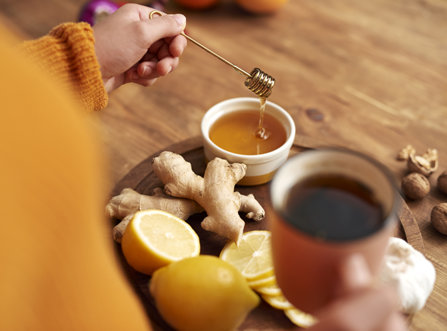Study Refutes Common Argument for Marijuana Legalization

There have been several arguments put forth by pro-cannabis legalization groups over the years. One of them has revolved around the alleged medicinal benefits of legalizing marijuana, with the repeated claim that legalizing marijuana will give pain patients a safer avenue towards pain relief. The idea behind it is that if pain patients can turn to marijuana instead of powerful, addictive, and potentially lethal opioid pain relievers, fewer people will become addicted to opioids.
However, a recent study refutes the claim that providing more access to marijuana does much of anything to affect opioid use.
A Look at the Data
Researchers at Columbia University in New York City looked at a study group of 211 people, examining their cannabis use and their opioid use trends. The study unveiled that opioid use was at least as high when cannabis was present as when it wasn’t.
According to Deborah Hasin, a professor of epidemiology at Columbia University in New York City, “Our study is among the first to test opioid substitution directly, suggesting that cannabis seldom serves as a substitute for nonmedical opioids among opioid-using adults, even among those who report experiencing moderate or more severe pain. In other words, our study suggests that cannabis is not an effective way to limit nonmedical opioid use.”
Not only has increasing access to marijuana failed to bring opioid use levels down, but marijuana has its own list of harmful side effects and negative characteristics.
What Can You Do for Safe, Effective, and Natural Pain Relief?

As more people become aware of the harmful side effects of using marijuana, the demand has increased for natural pain relievers that do not have harmful side effects. And while much of holistic medicine is not yet sufficiently researched, some published studies indicate potential benefits from natural pain relievers.
For example, one study published in the U.S. National Library of Medicine in 2010 examined this subject. According to the study authors Maroon, Maroon, and Bost, “For centuries, natural anti-inflammatory compounds have been used to mediate the inflammatory process and often with fewer side effects. We have briefly reviewed several of the most commonly used plant- and animal-derived natural compounds that may possess similar effectiveness in treating the inflammatory reaction seen in both chronic and sub-acute pain syndromes encountered in a typical neurosurgical practice. Ongoing experiments and clinical trials should be continued to guide and provide their scientifically based effectiveness to reduce inflammation and promote wellness.”
As scientific research continues to approve of natural and holistic medicines for pain relief, the Arthritis Foundation released a list of recommendations for non-drug and non-cannabis based osteoarthritic pain remedies. Some of them include the following supplements:
- Boswellia Serrate (Indian frankincense). The active compounds in Boswellia Serrate are called Boswellic acids. These compounds have both anti-inflammatory and analgesic properties. Given this dual nature, Boswellia Serrate can help reduce inflammation and relieve pain at the same time.
- Capsaicin (Capsicum frutescens). Capsaicin directly affects a key pain transmitter called “Substance P.” Ideally suited for joint pain, Capsaicin is generally used as a topical cream, gel, or patch.
- Tumeric/Curcumin (Curcuma longa). Long recognized as a natural remedy for joint pain, turmeric reduces swelling by blocking inflammatory cytokines and enzymes.
- Avocado-soybean Unsaponifiables (ASU). This helpful supplement has a few critical functions. It prevents the deterioration of the synovial cells (the cells that line joints). ASU may also help regenerate connective tissue within the body.
- Cat’s Claw (Uncaria tomentosa). Cat’s Claw, like many other natural and holistic remedies, offers multiple benefits. On the one hand, this supplement has been proven to reduce inflammation, swelling, and joint pain by up to 50 percent. And in addition to that, Cat’s Claw may have immune health benefits.
- Fish Oil (Omega-3 fatty acids EPA and DHA). Omega-3s can be found in certain foods, but they can also be taken as a supplement. According to the data, omega-3s serve to block inflammatory chemicals like cytokines and prostaglandins. Once consumed, omega-3s are converted into powerful anti-inflammatory chemicals called resolvins.
- Gamma-Linolenic Acid (GLA). When used consistently, Gamma Linolenic Acid has been shown to reduce inflammation and joint pain, stiffness, and grip-related pain.
- Ginger (Zingiber officinale). Ginger has been likened to ibuprofen in the pain-relieving strength that the plant possesses. Furthermore, ginger extract is as effective as many steroids in reducing inflammation.
People are beginning to see that there are safe, natural, nonaddictive, and side-effect-free methods for treating physical pain. The choices are not constrained to just opioid painkillers or just marijuana.
And last but not least, there is an addiction risk that goes along with marijuana. If someone uses marijuana and does not feel like they can stop using it, they will need to seek professional help. If you or someone you care about started using marijuana for pain relief but then became hooked on the drug, please reach out to Narconon today. Take the first step to a better life and a more healthful, side-effect-free approach to pain relief and break free from drugs for good.
Sources:
- https://onlinelibrary.wiley.com/doi/10.1111/add.15228
- https://www.usnews.com/news/health-news/articles/2020-10-08/many-using-cannabis-for-pain-take-opioids-too
- https://www.ncbi.nlm.nih.gov/pmc/articles/PMC3011108/
- https://www.arthritis.org/health-wellness/treatment/complementary-therapies/supplements-and-vitamins/9-supplements-for-arthritis


 ®
®